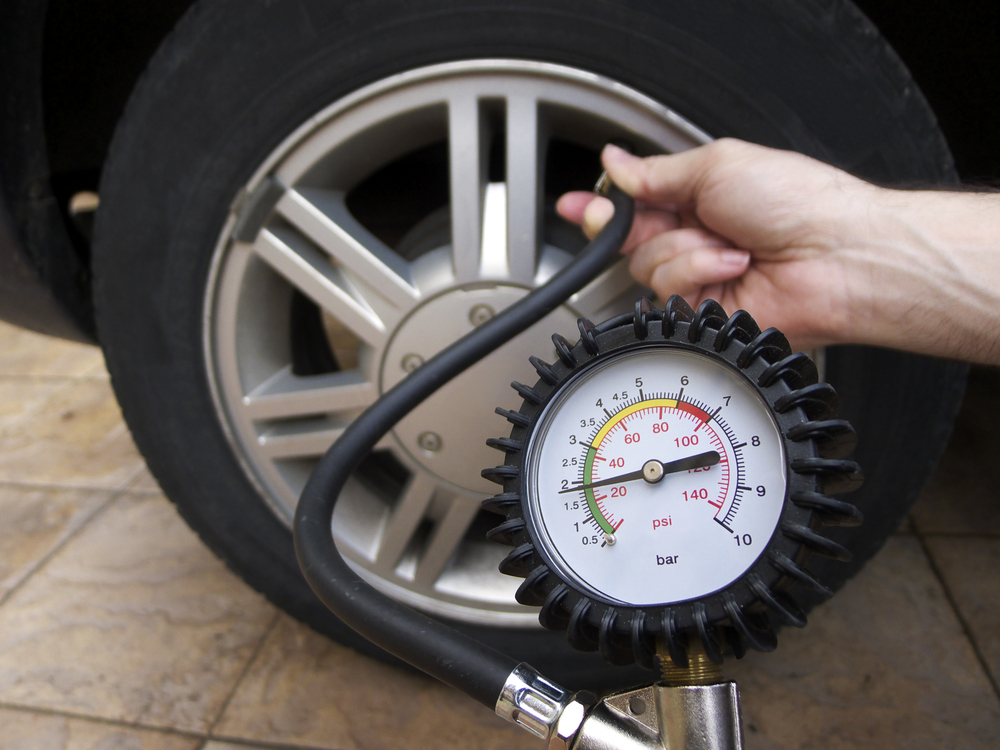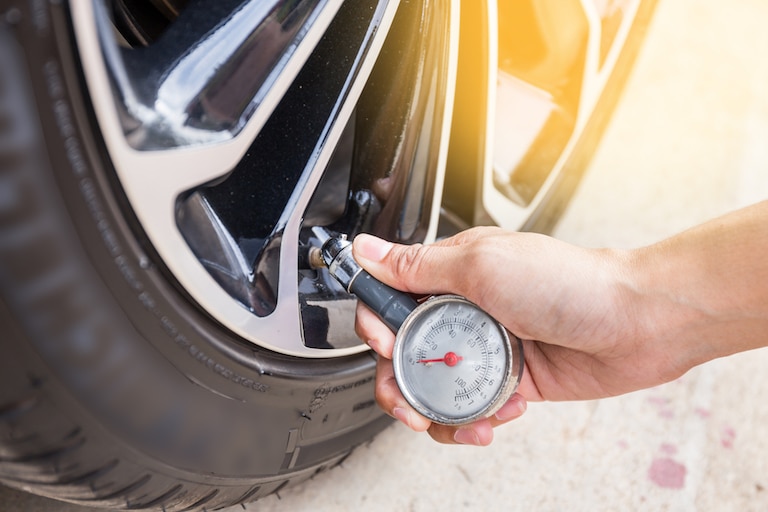Checking your car’s tire pressure is simple and important. Proper tire pressure keeps you safe and improves fuel efficiency.
Many drivers overlook this basic car maintenance task. Yet, incorrect tire pressure can lead to serious issues. Flat tires, reduced fuel efficiency, and poor handling are just a few problems. Knowing how to check your car tire pressure can prevent these issues.
This guide will show you the steps to check and maintain the right pressure. Regular checks can save you from unexpected breakdowns and costly repairs. Plus, it ensures a smoother, safer ride. So, let’s dive into the essential steps for checking your car tire pressure.
Importance Of Tire Pressure
Keeping tires at the right pressure is very important. Proper pressure helps your car grip the road. This can stop accidents. Under-inflated tires can overheat and fail. Over-inflated tires can burst. Both are dangerous.
Proper tire pressure saves you money. It makes your car use less fuel. Under-inflated tires need more energy to roll. This uses more gas. Over-inflated tires wear out faster. You will need new tires sooner. Save money and keep your tires at the right pressure.

Credit: www.floodmazda.com
Tools You Need
A pressure gauge measures the air pressure in your tires. It is easy to use. Place the gauge on the tire valve. Check the reading. Make sure the gauge shows the correct pressure. You can buy a pressure gauge at any auto store.
An air compressor adds air to your tires. Connect it to the tire valve. Turn it on. Add air until the tire reaches the right pressure. Many gas stations have air compressors. You can also buy one for home use.
When To Check Tire Pressure
Check tire pressure every month. Tires lose air slowly over time. Regular checks help you find problems early.
Check tire pressure before long trips. Driving far can affect tire pressure. It’s important for safety.
Steps To Check Tire Pressure
Find the valve stem on your tire. It looks like a small tube. Usually found on the rim. Remove the cap by twisting it. Keep the cap in a safe place. You will need it later. The valve stem is now ready for the next step.
Press the pressure gauge onto the valve stem. Hold it steady. Read the number on the gauge. This is your tire’s pressure. Compare it with the recommended pressure. You can find this in your car’s manual. If the pressure is low, add air. If it’s too high, let some air out. Check again to ensure it’s correct.
Interpreting Tire Pressure Readings
Check the car’s manual for the right tire pressure. This is important for safety. Most cars have this info on a sticker inside the driver’s door. The recommended pressure might be different for front and rear tires.
Use a tire pressure gauge to check. Make sure your tires are cold. Warm tires give incorrect readings. Compare the gauge reading with the recommended level. If it matches, your tires are good.
If the pressure is low, add air. You can find air pumps at gas stations. Unscrew the valve cap on the tire. Press the pump nozzle onto the valve. Check the gauge often. Stop when you reach the right pressure.
Low tire pressure can cause poor fuel economy. It can also be dangerous. Always keep your tires at the recommended pressure. This helps your car run smoothly and safely.
Adjusting Tire Pressure
First, find the tire valve stem. Remove the cap and keep it safe. Connect the air pump hose to the valve stem. Make sure it fits tightly. Check the pressure gauge on the pump. Add air in short bursts. Check the pressure after each burst. Stop adding air when the desired pressure is reached. Finally, remove the hose and put the cap back on.
First, find the tire valve stem. Remove the cap and keep it safe. Use a pressure gauge to check the current pressure. If the pressure is too high, press the small pin inside the valve stem. Air will start to release. Check the pressure again after a few seconds. Repeat until the desired pressure is reached. Finally, put the cap back on.
Common Mistakes To Avoid
Tire pressure changes with temperature. Hot weather can increase pressure. Cold weather can decrease it. Always check pressure when tires are cold. Driving warms tires and changes pressure readings. Inaccurate readings can be dangerous. Always adjust pressure for weather changes. Proper pressure keeps you safe.
Overinflated tires can be risky. They wear out faster. You may lose traction. Handling becomes poor. They can even burst. Always follow the car manual. Check pressure often. Use a good gauge. Safe driving needs correct tire pressure.

Credit: www.bridgestonetire.com
Maintaining Proper Tire Pressure
Check tire pressure at least once a month. Use a reliable gauge for accuracy. Ensure tires are cold before checking. Hot tires can give false readings. Follow the car manual for correct pressure. Too high or too low pressure can cause problems. Low pressure can wear out tires quickly. High pressure can lead to blowouts.
Temperature changes affect tire pressure. Cold weather can lower tire pressure. Warm weather can increase it. Check tire pressure more often in these seasons. Adjust pressure as needed. Follow the car manual for correct adjustments. Proper pressure ensures safe driving.

Credit: www.bridgestonetire.com
Frequently Asked Questions
How Do You Check Tire Pressure At A Gas Station?
Check tire pressure at a gas station by removing the valve cap, attaching the air pressure gauge, and reading the measurement. Adjust the pressure as needed using the station’s air pump. Reattach the valve cap when done.
How Do I Find The Correct Tire Pressure For My Tires?
Check the owner’s manual or the tire placard on the driver’s door for the recommended tire pressure. Use a reliable gauge to measure.
What Psi Should My Car Tires Be?
Check your car’s manual or the tire placard on the driver’s door. Typically, car tires should be 30-35 psi.
How Do I Know If I Need Air In My Tires?
Check your tire pressure with a gauge. Compare the reading to the recommended level in your vehicle’s manual. Low pressure indicates the need for air.
Conclusion
Regularly checking your car tire pressure is crucial for safety. It helps maintain fuel efficiency and extends tire life. Simple steps, like using a pressure gauge, can prevent accidents. Keep your tires properly inflated. A small routine with big benefits.
Stay safe and save money by making this a habit. Happy driving!

